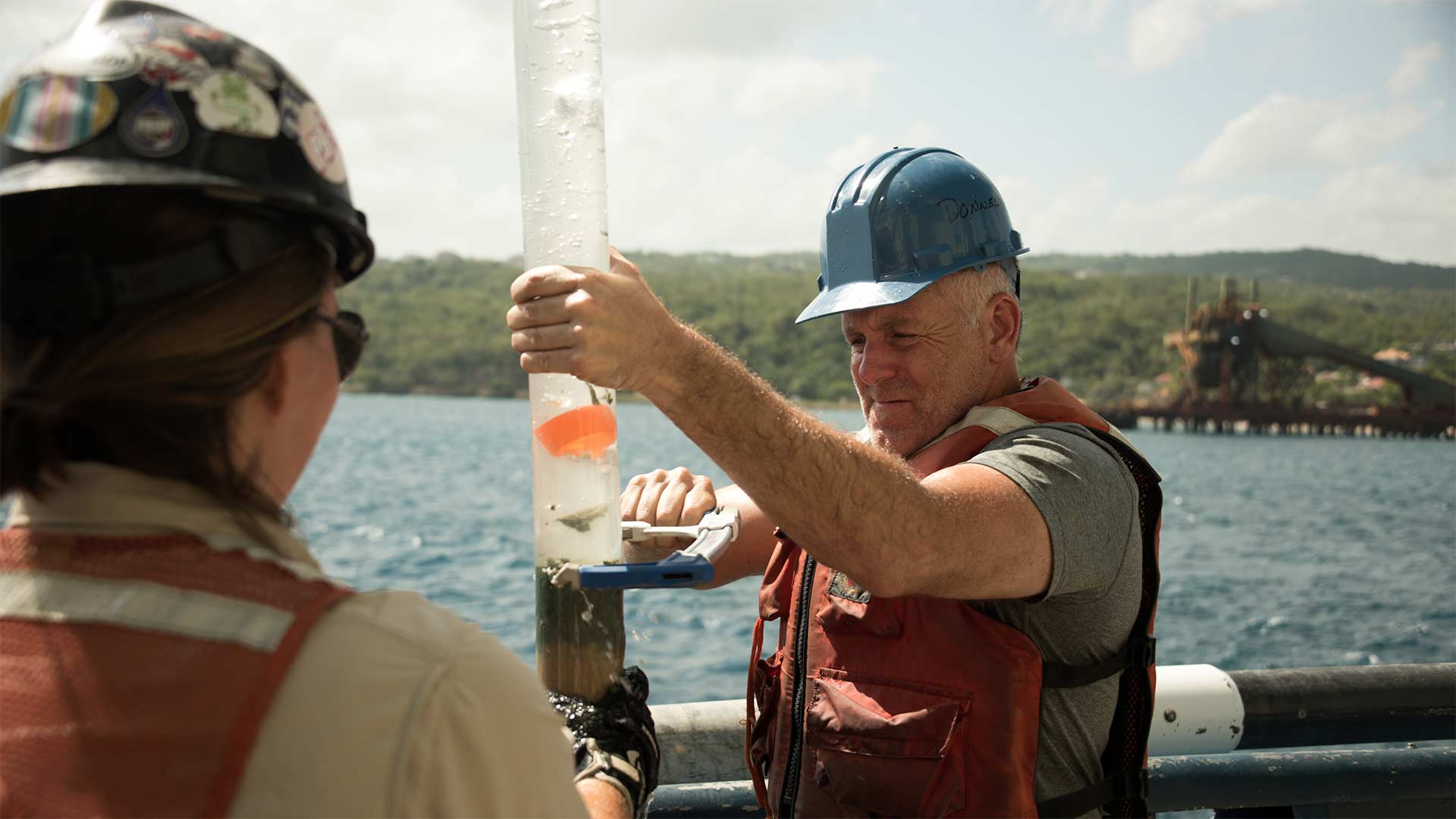 Dr Jeff Donnelly and team coring in Discovery Bay, Jamaica.
Dr Jeff Donnelly and team coring in Discovery Bay, Jamaica.
The Great Hurricane of 1780 took nine days to blast its way across the Caribbean, killing at least 20,000—the highest known death toll of any single weather event in history. What made this superstorm so deadly? To reconstruct its epic scale and investigate what made it so devastating, NOVA joins historians and storm sleuths as they track down clues in eyewitness chronicles, old ruins, and computer simulations. Their evidence points to a truly terrifying, 300-mile-wide storm—with wind speeds probably exceeding 230 miles an hour and 25-feet storm surges that demolished everything in their path. But just how unusual was the Great Hurricane? Diving into sinkholes off Barbados and squirming into caves in the Yucatan, NOVA’s experts recover traces of tempests stretching back over more than 1,000 years. The picture they paint is disturbing: mega-hurricanes were not only more frequent in the past but are likely to strike again in our near future, as climate change warms the oceans and fuels more intense hurricanes. Were the deaths and damage inflicted by storms like Hurricane Sandy a prelude to far more devastating disasters?
NOVA: Killer Hurricanes, Wednesday at 9 p.m. on PBS 6.

By submitting your comments, you hereby give AZPM the right to post your comments and potentially use them in any other form of media operated by this institution.